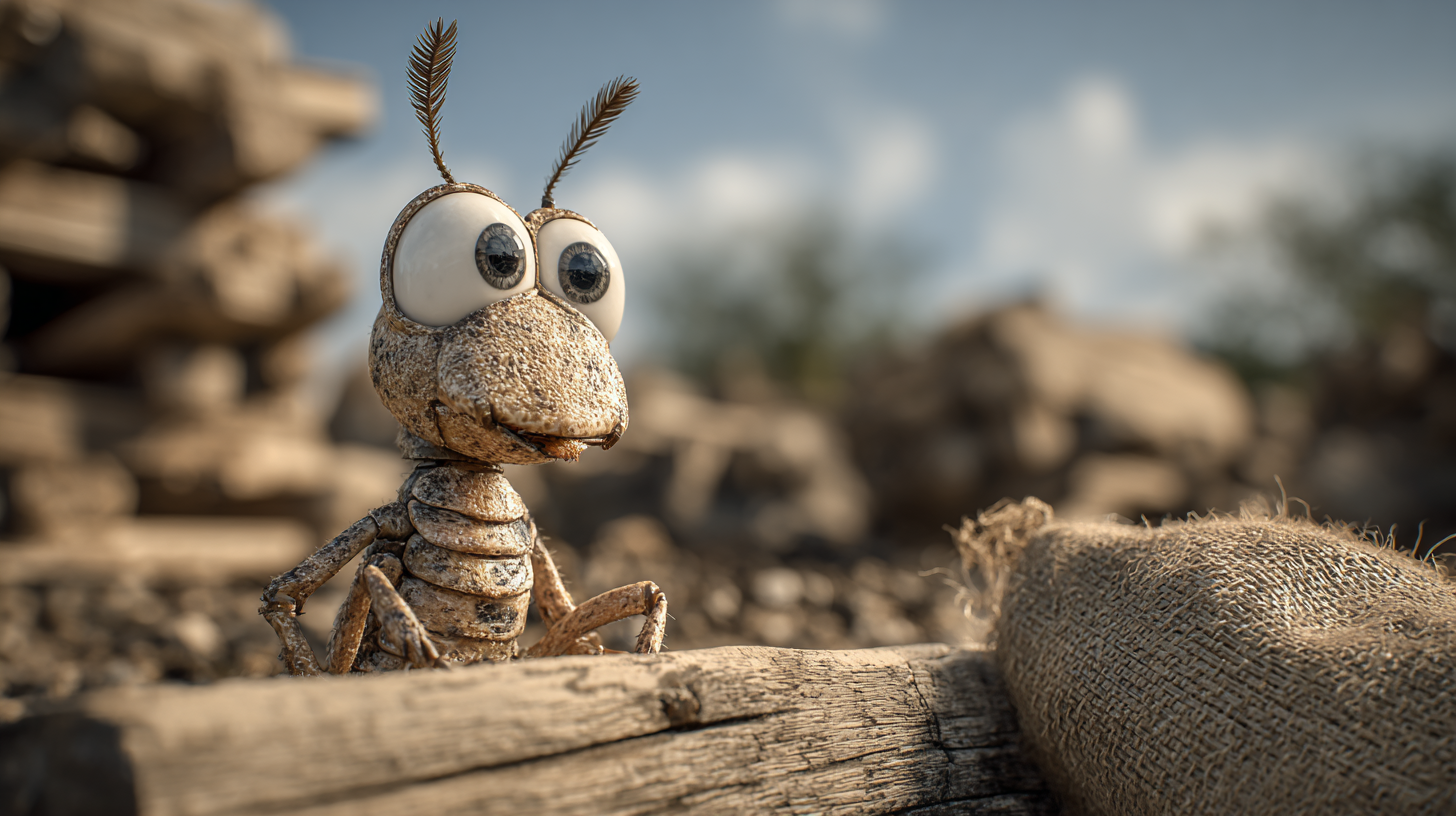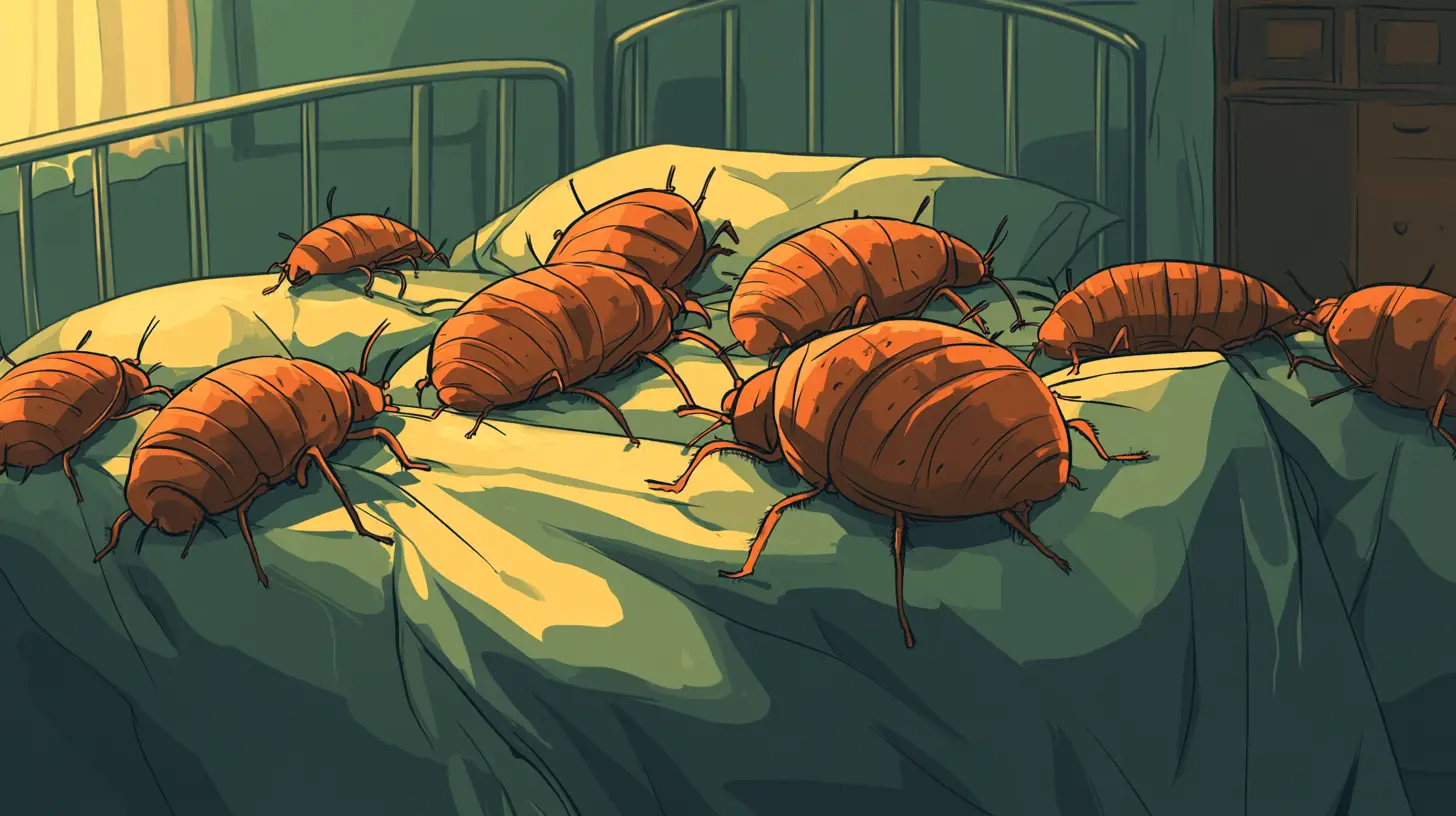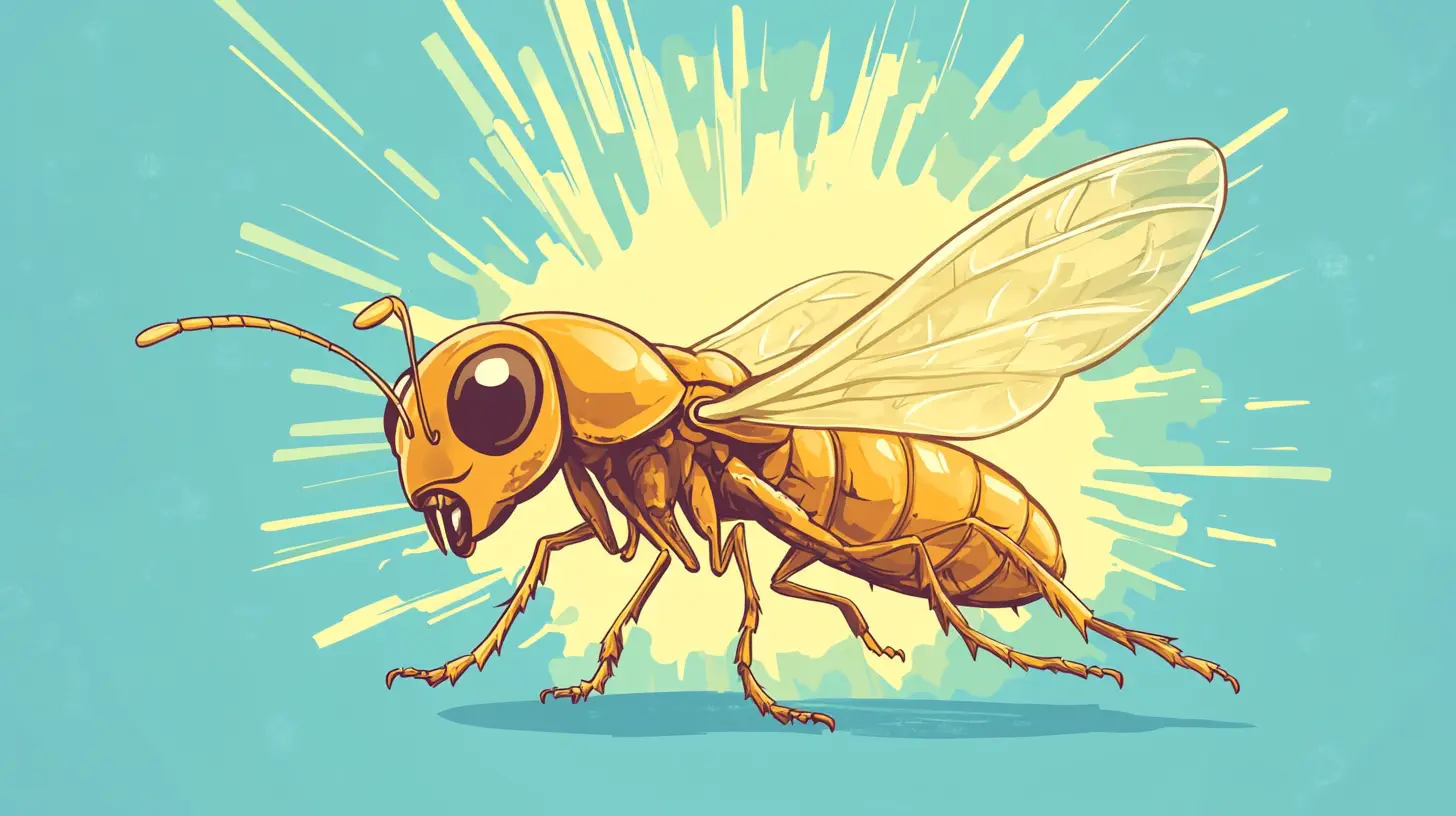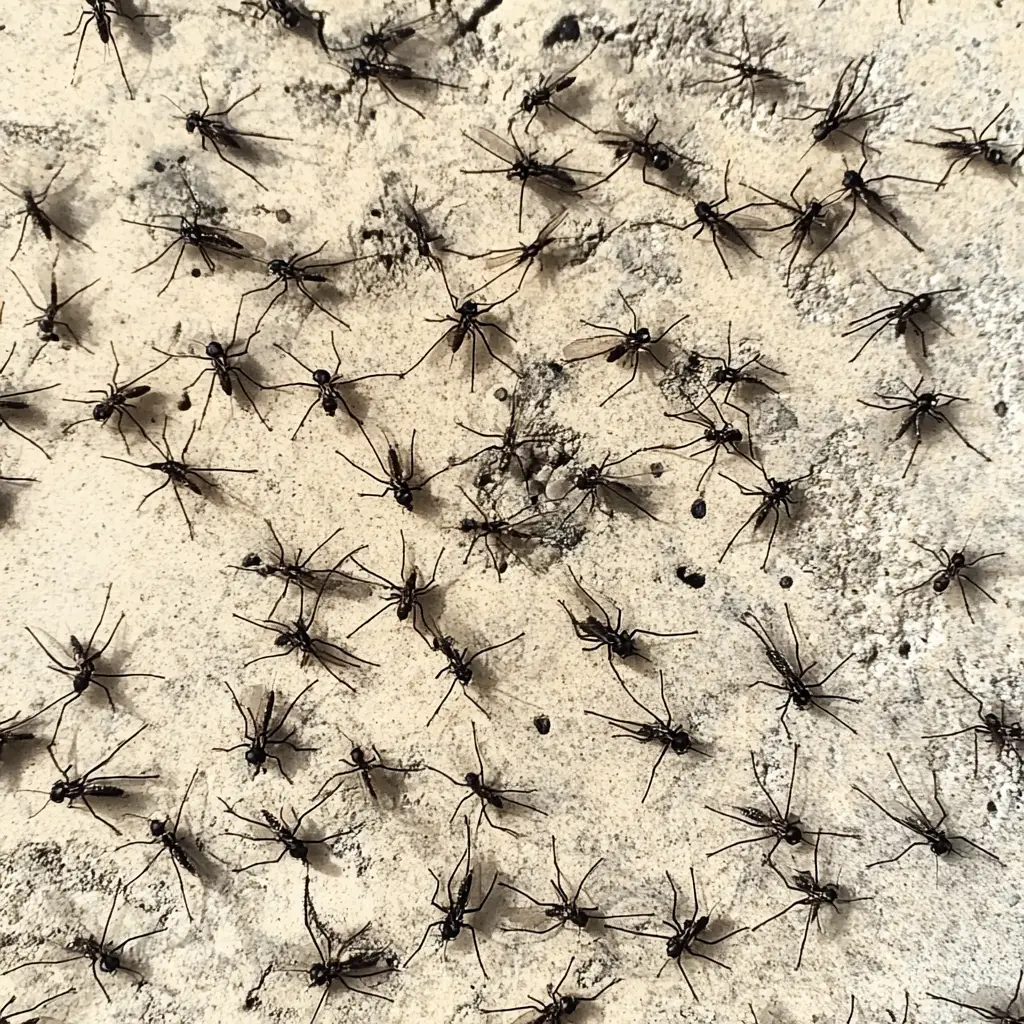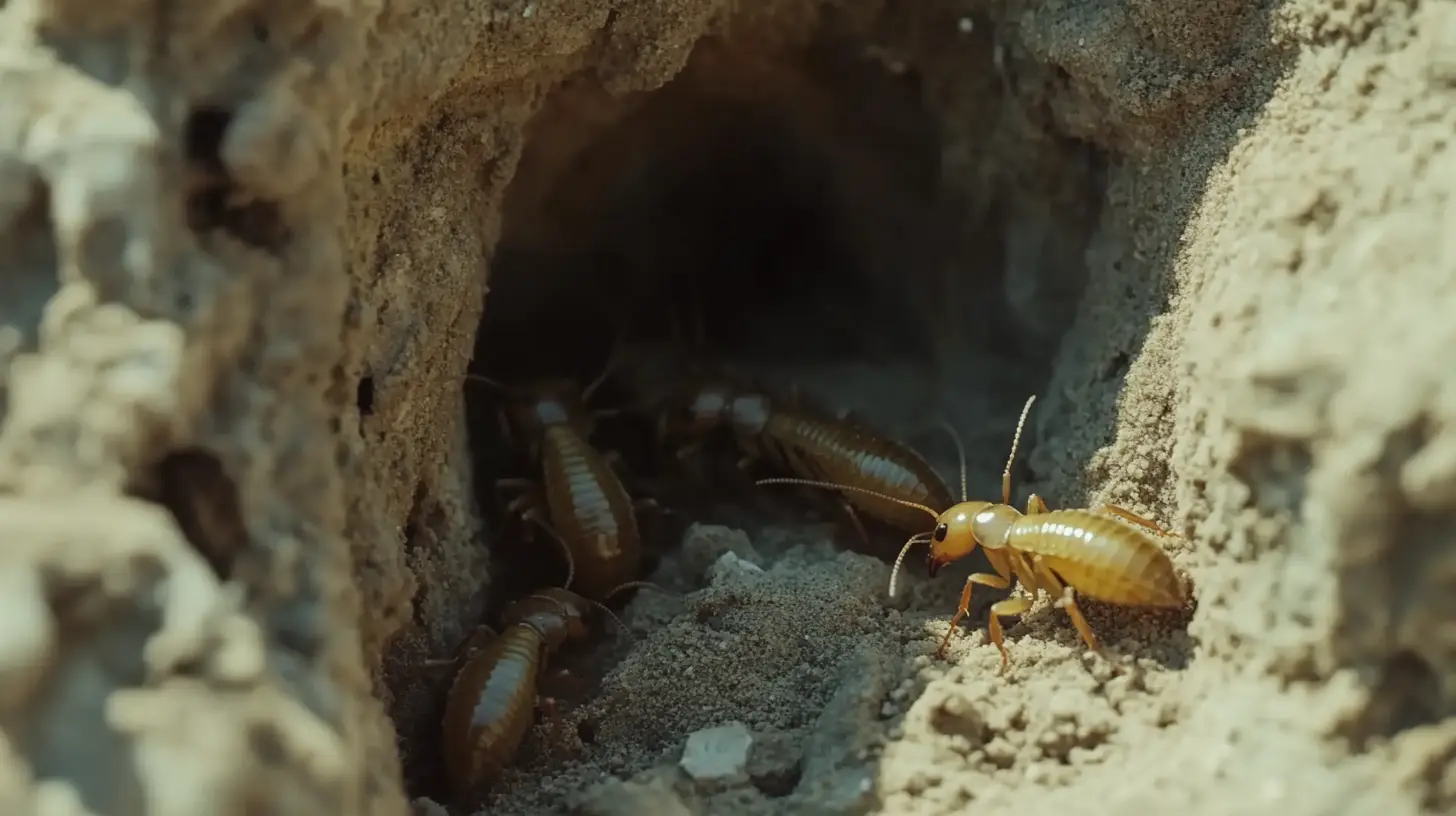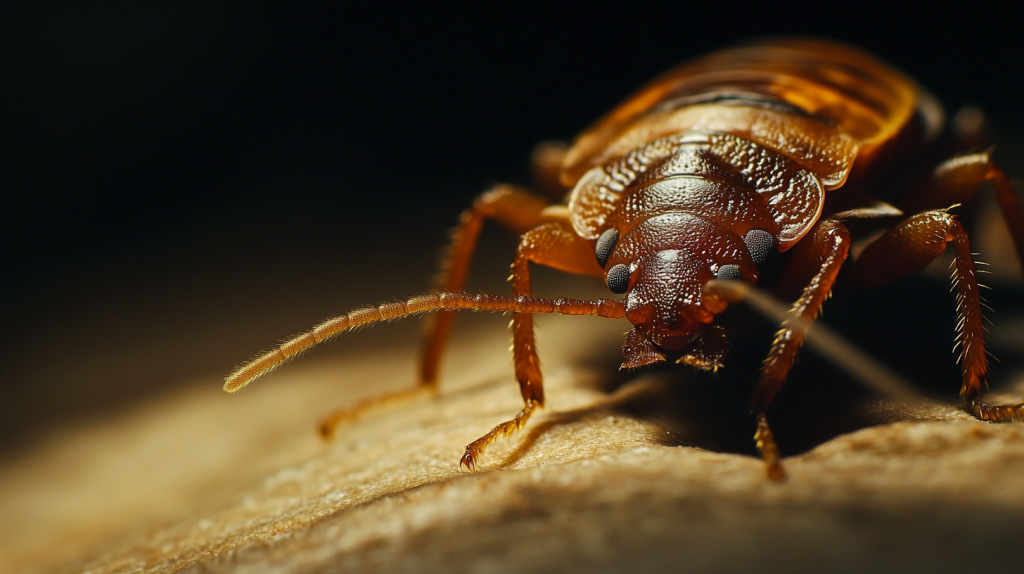
Table of Contents
Living in Bradenton, FL, you know the warm climate is a haven for all kinds of pests, including the dreaded bed bugs. Bed bugs, known to be exceptional travelers and notorious for their ability to hitch a ride on almost anything—luggage, clothing, furniture, or even electronics. Their skill at hiding in small crevices and clinging to belongings makes them particularly challenging to keep out of homes and public places.
Although bed bug bites can cause itchy welts and allergic reactions, they are not known to transmit diseases to humans. However, the psychological effects of an infestation—such as anxiety and insomnia—can have significant impacts on a person’s well-being.
If you’re tired of sharing your bed with these unwelcome guests, it’s time to take action. Discover effective strategies to get rid of bed bugs from your home and reclaim your comfort.
Understanding Bed Bugs
Bed bugs, those tiny, elusive creatures, often find their way into homes in Bradenton, FL. Thriving in warm climates, these pests can cause important distress. Knowing how to identify them is the first step in your battle to get rid of bed bugs.
Bed bugs are attracted to the carbon dioxide we exhale. This helps them locate their hosts since they often hide during the day and become active at night when people are sleeping. The warmth and carbon dioxide we emit make it easy for them to home in on us. When bed bugs bite, they inject an anesthetic along with an anticoagulant, which prevents you from feeling the bite as it happens. This is why most people do not wake up when they are bitten, only noticing the red, itchy spots the following day.
Bed bugs are nocturnal parasites, typically feeding on human blood while you sleep. Measuring about 1/4 inch, they have flat, oval bodies and are reddish-brown. Bed bug bites often leave itchy, red welts, which can be mistaken for mosquito bites. Bed bugs have flattened, oval-shaped bodies, which allow them to fit into incredibly narrow spaces, such as mattress seams, headboards, behind picture frames, or inside electrical outlets. Their slim profile makes it easy for them to remain hidden during the day.
Bed bugs can survive for months without feeding. In cooler temperatures, they can enter a state of dormancy, allowing them to live up to a year without a blood meal. This makes them particularly hardy and capable of waiting out unfavorable conditions. Bed bugs are not host-specific—they will feed on any warm-blooded animal, though they prefer humans. Their preference for human blood is likely because we don’t have as much fur, making it easier for them to feed on us compared to pets or other animals.
To find bed bugs, start by inspecting your mattress seams, box springs, and bed frames. They love hiding in cracks and crevices. You might spot rusty or reddish stains on your sheets or mattress caused by crushed bugs. Dark spots about the size of a pinhead (bed bug excrement) are also a clear sign of infestation.
Bed Bugs: Identification, Risks, and Management
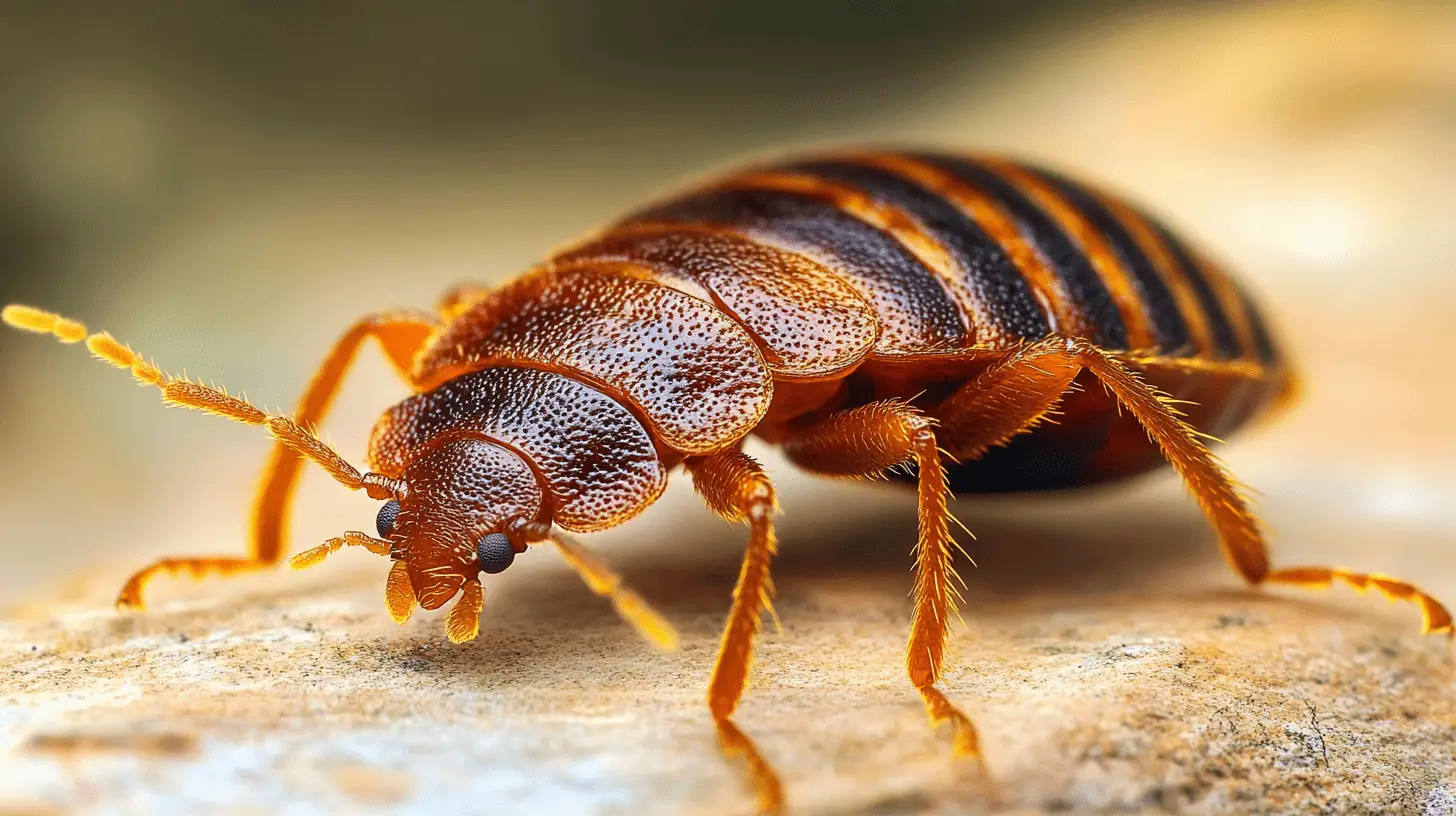
Identification
- Scientific Name: Cimex lectularius
- Size: Adults are about 1/4 inch (6 mm) long, oval-shaped, and reddish-brown.
- Appearance: Before feeding, they are flat and brown; after feeding, they become swollen and darker. Nymphs are smaller, often pale yellow until they feed.
Signs of Infestation
- Fecal Spots: Small, dark spots on bedding or furniture.
- Blood Stains: Rusty stains on sheets or mattresses from crushed bed bugs.
- Eggs and Shells: Tiny white eggs (about 1 mm) and shed skins from molting.
- Bites: Itchy welts, often appearing in clusters or lines on exposed skin.
Behavior
- Feeding Habits: Bed bugs primarily feed on human blood at night. Feeding takes 3-12 minutes.
- Hiding Places: They hide in mattress seams, bed frames, and furniture, as well as in cracks and crevices around the home.
- Travel: Bed bugs are adept hitchhikers, often spreading through luggage, clothing, or used furniture.
Health Risks
While bed bugs do not transmit diseases, their bites can cause discomfort, leading to:
- Itchy welts or rashes
- Allergic reactions in some individuals
- Insomnia and anxiety due to the presence of bed bugs and discomfort from bites
Management and Control
Prevention Tips
- Inspection: Regularly check bedding and furniture for signs of bed bugs, especially after traveling.
- Cleaning: Wash bedding in hot water and dry on high heat to kill bed bugs and their eggs.
- Sealing Cracks: Seal cracks and crevices around windows, doors, and baseboards to prevent entry.
Treatment Options
- Professional Extermination: Seek pest control services for effective treatment of bed bug infestations.
- DIY Methods: Vacuum infested areas, use mattress encasements, and apply insecticides labeled for bed bugs.
Bed bugs are resilient pests that can cause considerable distress. Early detection, proactive measures, and professional assistance are key to managing and eliminating infestations.
Understanding bed bugs helps in choosing the right extermination method. Some opt for DIY bed bug removal using over-the-counter sprays. But, the most effective treatments often require professional bed bug exterminators who use advanced techniques like heat treatment.
Remember, early detection is crucial. Regularly check your sleeping areas and furniture for signs of bed bugs to prevent a full-blown infestation. By being proactive, you can maintain a comfortable, bug-free home.
Identifying Bed Bug Infestations
Living in Bradenton, FL, the warm climate creates a perfect environment for bed bugs. Early identification is key to keeping these pests at bay in your home.
Signs and Symptoms
Look for itchy red bites, often in clusters or lines, on your skin. Examine your bedding for rust-colored stains, dark spots, or molted skins. Bed bug bites are usually small, flat, or raised, turning into red, swollen welts over time. Pets might also show similar signs if infested.
Where to Look
Begin by inspecting your mattress, especially the seams, for tiny eggs or live bugs. Look around box springs, bed frames, and headboards. Bed bugs often hide in cracks and crevices during the day. Check the underside of furniture, behind picture frames, and inside electrical outlets. Used furniture and luggage are common entry points, so inspect these before bringing them into your home.
Female bed bugs can lay 200 to 500 eggs over their lifetime, which can be as long as a year under favorable conditions. They lay 1 to 5 eggs per day, which hatch in about 6 to 10 days. This rapid reproductive cycle makes bed bug infestations escalate quickly if left unchecked.
Identifying bed bug infestations early is essential. This knowledge allows you to act swiftly in getting rid of bed bugs and restoring comfort to your Bradenton home.
Methods to Get Rid of Bed Bugs
Living in Bradenton, FL, probably means you’re no stranger to pests. Bed bugs are particularly troublesome because they invade our sanctuaries—our beds. Let’s jump into effective methods to get rid of bed bugs.
Chemical Treatments
Chemical treatments offer a reliable way to eliminate bed bugs. You can use insecticides specifically designed for bed bug extermination. Examples include pyrethroids which kill bed bugs on contact and neonicotinoids that work by attacking their nervous system. But, bed bugs are resilient, and some may develop resistance. Using a combination of chemicals often gives better results.
Always read labels carefully and follow instructions. If you’re unsure, consider hiring a professional bed bug exterminator who can apply these treatments effectively.
Non-Chemical Treatments
Some prefer not to use chemicals and opt for non-chemical treatments. Heat treatments, for instance, are highly effective. Bed bugs have a preference for environments between 70 and 80°F (21-27°C), which is why they thrive in the comfort of our Florida homes. High temperatures, however, are their downfall; they can be killed by sustained heat above 120°F (49°C), which is why professional bed bug heat treatments are often effective in eliminating them.
You can rent professional-grade heaters or hire a service specializing in bed bug heat treatments. Another option is steam treatment, which reaches into cracks and crevices where bed bugs hide. Bed bug traps and mattress covers can also help control the population by preventing bites and capturing bugs attempting to migrate. Each option offers a chemical-free way to tackle infestations.
DIY Answers
Feeling adventurous and ready to tackle bed bugs yourself? DIY answers can be both cost-effective and rewarding. Start by washing and drying your bedding at the highest temperature setting. Next, use a vacuum cleaner on your mattress, bed frame, and surrounding areas. Consider using a bed bug spray available at local stores in Bradenton, FL.
Diatomaceous earth is another excellent natural remedy for bed bugs; sprinkle it around baseboards and other infested areas. Finally, bed bug traps can monitor and reduce the population. While DIY methods require diligence and patience, they can significantly impact minor infestations.
Each method has its strengths, depending on your preference, the severity of the infestation, and whether you want professional assistance or a hands-on approach.
Preventing Bed Bug Infestations
So, you’ve discovered bed bugs in your home or perhaps you’re keen on keeping these pests at bay in sunny Bradenton, FL. Preventing bed bug infestations isn’t just about keeping your home tidy; it’s about being vigilant and proactive.
Tips for Homeowners
- Regular Inspection: Make it a habit to inspect mattresses, furniture, and baseboards regularly. Look for signs of bed bugs like rusty stains or tiny dark spots.
- Decluttering: Reduce clutter to limit hiding spaces for bed bugs. Infestations often start in hidden, neglected areas.
- Vacuuming: Vacuum your home frequently, especially around bed frames and furniture. Dispose of the vacuum bag in a sealed plastic bag.
- Sealing Cracks: Seal cracks and crevices in walls, baseboards, and furniture. Bed bugs can hide in the smallest spaces.
- Mattress Covers: Use bed bug-proof mattress covers and encasements. These can trap and kill bed bugs already on your mattress.
- Laundry: Wash bedding, curtains, and clothing in hot water regularly. Heat effectively kills bed bugs.
Tips for Travelers
- Hotel Inspections: Inspect hotel rooms for signs of bed bugs. Check mattresses, headboards, and furniture.
- Luggage Precautions: Keep your luggage off the floor and beds. Use luggage stands or store it in the bathroom.
- Laundry Upon Return: Immediately wash and dry all clothing from your trip in hot water.
- Sealed Bags: Store items that can’t be washed immediately in sealed plastic bags. This prevents any hitchhikers from spreading.
- Treat Your Luggage: Use bed bug sprays on your luggage after travel. Opt for sprays that kill bed bugs to ensure no pests make it home with you.
By staying vigilant and proactive, you greatly reduce the risk of bed bug infestations in your Bradenton, FL home.
Frequently Asked Questions (FAQs)
What are the common signs of a bed bug infestation?
Common signs include itchy red bites in clusters or lines, rust-colored stains on bedding, and dark spots on mattresses, box springs, and bed frames. You may also see live bed bugs, which are flat and oval-shaped.
How do bed bugs enter homes?
Bed bugs can enter homes through luggage, used furniture, clothing, and even through walls from adjacent properties. They can also hitch a ride on personal belongings when traveling.
Where should I inspect for bed bugs?
Inspect mattresses, box springs, bed frames, and other potential hiding spots like furniture, electrical outlets, and even small cracks and crevices in the room.
Are DIY methods effective for eliminating bed bugs?
While DIY methods like washing bedding in high temperatures and vacuuming can help, professional extermination methods such as heat treatment are often more effective in completely eradicating bed bugs.
What professional treatments are available for bed bugs?
Professional treatments include chemical insecticides (like pyrethroids and neonicotinoids) and non-chemical options like heat and steam treatments. These methods usually offer more thorough eradication compared to DIY solutions.
How can I prevent bed bug infestations?
Regularly inspect mattresses and furniture, declutter to limit hiding spaces, vacuum frequently, seal cracks, and use bed bug-proof mattress covers. For travelers, inspect hotel rooms, keep luggage off the floor, and wash clothes immediately upon return.
Can bed bugs cause health issues?
While bed bugs do not transmit diseases, their bites can cause itching, allergic reactions, and secondary skin infections due to scratching. The presence of bed bugs can also lead to stress and insomnia.
Why is early detection crucial for bed bug control?
Early detection allows for more effective and less costly eradication methods. Catching an infestation early can prevent it from becoming more widespread and difficult to manage.

